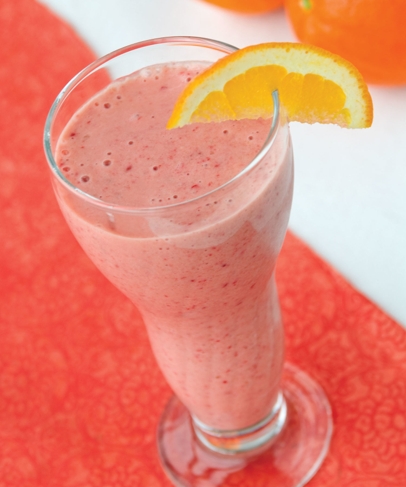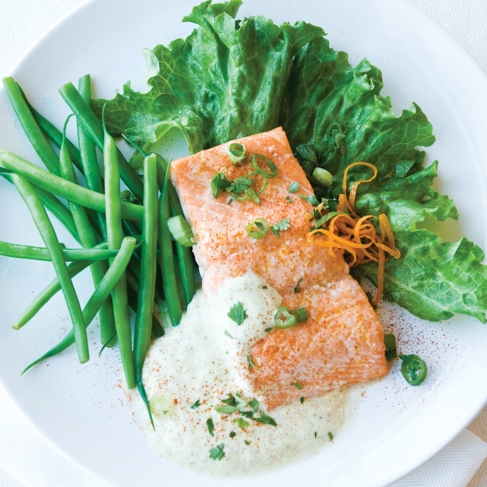
Yogurt is good for our health. Bored with the same old yogurt? Try a different type of yogurt such as goat, sheep, soy, or Greek—or make your own.
Yogurt is one of the world’s oldest foods, likely created by accident when lukewarm milk hooked up with bacteria and, voila, fermentation occurred.
The nuts and bolts of yogurt-making haven’t changed much over the centuries, but increasingly, we’re appreciating this creamy concoction not only for great taste and adaptability in the kitchen but also for its abundant health perks.
For starters, yogurt is brimming with live active cultures, beneficial critters that boost immune and digestive health. Add to this a hefty amount of bone-building calcium, vitamin B12, potassium, zinc, and protein to help build and repair muscles, and it’s clear that if there ever was a food deserving of its superfood epithet, it is yogurt.
Sales of this power food have grown by leaps and bounds in recent years, and so has the number of yogurt types. Here is a list of the ones creating a real stir.
Greek yogurt
If the runny texture of regular yogurt bothers you, then try deliciously thick and smooth Greek yogurt. For eons, the Greeks have been making an indulgent, no-stir treat they call yiaourti by straining out the liquid whey that pools on top of yogurt. This increases the overall concentration of yogurt in the container, making a thicker product with up to twice the amount of protein, about 20 g per cup.
Strained yogurt not only contains less sodium than regular yogurt but also has fewer carbohydrates and therefore less lactose, the sugar in dairy products that makes some stomachs churn. Greek-style yogurt tends to hold up better than regular yogurt when heated. Also, due to its hearty texture and rich taste, it can be substituted for sour cream, milk, mayonnaise, and even crème fraise in recipes.
Tzatziki dip for discerning palates
Into the bowl of a food processor add juice of 1 lemon, 1 garlic clove, 2 seeded and diced cucumbers, 1 Tbsp (15 mL) fresh dill, and ground black pepper and sea salt to taste. Process until well combined, then stir in 3 cups (750 mL) plain Greek yogurt. Tzatziki is great with meats such as salmon, lamb, and chicken.
Soy yogurt
Soy yogurt is made by combining soy milk with vegan bacterial strains. It may have a slight beany taste that puts off some, but it lacks lactose, making it a boon to those who are lactose intolerant. Unlike dairy yogurt, the soy version is naturally low in saturated fat and contains energy-boosting iron. It also contains phytoestrogens, estrogen-like compounds that may improve bone health and offer a number of heart-health perks, such as keeping cholesterol levels in check.
Two separate 2009 studies published in the American Journal of Clinical Nutrition reported that soy consumption was protective against prostate and breast cancer. Large amounts of sugar may be added to cover the unmistakable soy flavour. When possible, choose lower-sugar brands as well as certified organic, which uses nongenetically modified soybeans.
Soy yogurt parfait

For a delicious snack, place a dollop of soy yogurt in the bottom of a tall glass. Top with granola and berries. Repeat the layers and top with a drizzle of pure maple syrup.
Kefir
Originally from the Caucasian mountain region of Russia, sour kefir is made by inoculating milk with kefir grains, which are a mixture of yeasts and bacteria. Studies suggest this kissing kin of yogurt has unique types of beneficial bacterial cultures that break down the sugars in milk, making it a possible dairy option for those who are lactose intolerant.
Further, researchers at McGill University found that kefir may halt the spread of breast cancer cells. Kefir’s ability to reduce inflammation, allergies, cholesterol, blood pressure, and diarrhea has been demonstrated in research circles as well. The Russians think so highly of the curing potential of this dairy product that daily rations are doled out in hospitals.
In supermarkets, kefir is available mostly as a thick smoothie-like drink, an excellent recovery food after a hard workout.
Kefir shake

If you find kefir too sour on its own, add 1 cup (250 mL) kefir to a blender along with 1 banana, 1 cup (250 mL) orange juice, 1/2 cup (125 mL) frozen berries, and 1 Tbsp (15 mL) each honey and almond butter. Whirl until smooth.
Frozen yogurt
When it comes to dessert, don’t give frozen yogurt the cold shoulder. Refreshing and tangy, frozen yogurt is often lower in fat than regular ice cream because it is produced using milk instead of cream. Like thawed yogurt, it is a good source of calcium, protein, and healthy bacteria. However, many frozen yogurts contain copious amounts of sugar, so this should be a treat to enjoy in moderation or you may find yourself on bad terms with the scale. When possible, choose brands that include real fruit and avoid high sugar content, fruit flavouring, or questionable artificial sweeteners.
Topped frozen yogurt

Add a scoop of frozen yogurt to a bowl and top with your favorite granola, sliced strawberries, chopped pecans, and cocoa nibs.
Goat yogurt
Other than a slight goaty note, a good smooth goat yogurt should not taste much different than yogurt made with cows’ milk. The fermentation of goat yogurt has been found to produce compounds that may help lower blood pressure. With similar nutritional profiles, the biggest difference between goats’ milk yogurt and its cow brethren is digestibility. Goats’ milk has smaller fat and protein globules, making it easier on the tummy.
Crowd-pleasing guacamole

Mash 2 avocados in a bowl and add 1 cup (250 mL) goat yogurt, 1/2 teaspoon (2 mL) cumin powder, 1/2 finely chopped jalapeno (more if you like it hot), 1 chopped garlic clove, juice from 1/2 lime, a handful of fresh cilantro, and salt to taste. Mix until desired consistency.
Sheep yogurt
Sheep’s milk has more solids than cows’ or goats’ milk, making the yogurt a rich, luxuriously thick product without the need for thickeners. It is also easier to tolerate for those sensitive to cows’ milk because its protein structure is different. Compared to cow or goat yogurt, sheep yogurt comes out ahead with respect to protein, calcium, the B vitamins, and magnesium.
Sheep’s milk also contains more fat, but a good chunk of it is heart-healthy unsaturated fats and short- and medium-chain saturated fats, which are less damaging to your ticker and midriff. As a welcome relief from many yogurts that have a seemingly never-ending ingredient list, most sheep yogurt manufacturers add very little to their products, allowing the natural textures and flavours to explode in your mouth. Because sheep give less milk than cows or goats and are more labour intensive, you’ll likely pay a little extra for sheep yogurt.
Yogurt sauce

Mix together 1 cup (250 mL) plain sheep yogurt with 1 tsp (5 mL) orange zest, juice from 1/2 lime, 1/2 Tbsp (7 mL) curry powder, 1/8 Tbsp (0.5 mL) cayenne powder, and 1 Tbsp (15 mL) honey. This mixture brings instant brightness to fish.
Homemade yogurt
Crafting your own yogurt saves you money, cuts down on container waste, and (who knew?) is surprisingly easy.
What you need
- 34 oz (1 L) glass jar
- Food thermometer
- 1 1/3 cup (330 mL) non-instant skim milk powder
- 1/4 cup (60 mL) plain yogurt
How to make it
Scrupulously clean all your equipment and your hands with hot, soapy water to kill off any unwanted bacteria. Fill the jar with water to about 2 in (5 cm) from the top. Pour the water into a saucepan and heat until 100 to 110 F (45 C). Pour 1 cup (250 mL) of the warm water into a blender and the remainder back into the jar. With the blender on its lowest setting, add milk powder and yogurt. The moment the mixture is smooth, turn off.
Add milk mixture to jar and close lid tightly. Set jar in warm oven (see note) and let set for 3 or more hours. When the surface of the yogurt resists a slight touch, place jar in refrigerator to cool completely and thicken further. Occasionally, you’ll get a batch that does not set, but failures are great in smoothies.
Note: If using an electric oven, turn it to the lowest heat setting for 2 minutes, turn off, and put in a pot of boiling water along with the yogurt jar. If you have an oven with a gas pilot light, turning it on for a few minutes and then turning it off before adding the yogurt jar should provide enough warmth.
You want the temperature of the environment during yogurt setting to stay between 90 F (32 C) and 120 F (49 C). As an alternative to the oven, pour some hot water (115 F/46 C) into a cooler, add the jar, and shut the lid, checking every now and then to make sure the internal temperature is in the correct range. Replace warm water as necessary.
Tags:





